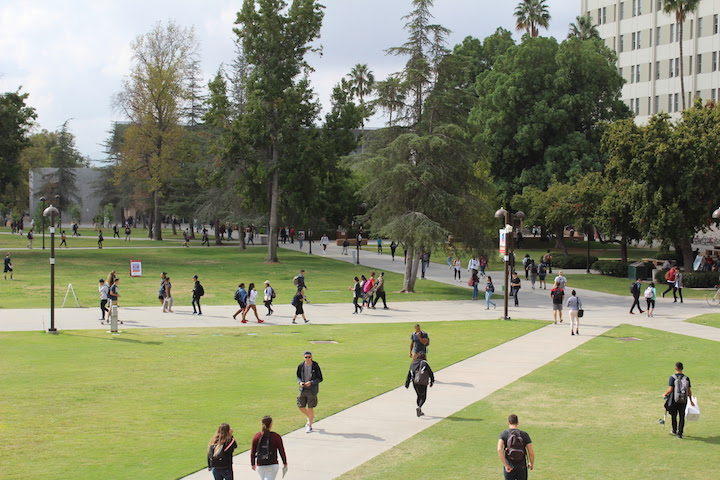
Credit: Larry Gordon / EdSource
Despite being the nation’s economic powerhouse with the largest postsecondary system in America, California stands alone among all 50 states without a higher education coordinating entity. This gap has resulted in missed opportunities and unrealized potential — and it’s a systemic failure that leaves real people behind every day.
Ask Fred P., who applied for unemployment when he lost his job during the pandemic. What California’s systems failed to tell him was that he qualified for the Golden State Education and Training Grant designed to help displaced workers like him. As his savings dwindled and bills mounted, available support remained hidden in bureaucratic silos. Fred only discovered the program months after his unemployment benefits expired — and only because his partner happened to work in state policy and budget.
Meanwhile, millions of other Californians, without such connections, remain unaware of potential pathways to economic mobility and continue to fall through the cracks of our state’s disconnected education and workforce systems. During the pandemic, over 19 million Californians lost jobs and applied for unemployment, yet very few were informed they qualified for this scholarship program, which should have connected them to training opportunities for career advancement. California allocated $500 million to this program, but two years later, only $20 million had reached just 6,100 individuals. Why? Because the agency administering scholarships couldn’t identify unemployed workers, and the unemployment office couldn’t connect people to the available education funding. Two state systems, both serving Californians, but operating in silos, left resources untapped and communities unsupported.
This fragmentation creates a maze that widens opportunity gaps, particularly for those without the social capital or resources to guide them through complex systems. At the start of the pandemic, over 5 million Californians intended to enroll in college in the next two years, but many — especially especially Latino, Black, Native American residents, first-generation college students, Californians with children, and those working low-wage jobs — face a gauntlet of barriers that numerous disjointed access programs fail to address. Meanwhile, more than a billion dollars in education and workforce development funding goes unused, while Californians seeking better opportunities have trouble finding quality training opportunities to reach their career goals, and employers struggle to find qualified workers for open positions.
These disconnected systems don’t just create inconvenience — they perpetuate cycles of poverty. For Californians living on the margins, the cost associated with college —an established path to economic mobility — is a huge barrier and makes it seem out of reach. Meanwhile, over a hundred programs exist that could defray the financial burden and increase college access. But, without coordination, these public benefit programs designed to improve economic stability remain inaccessible to those who need them most. When systems don’t talk to each other, the promise of these programs remains unfulfilled, leaving workers, families and employers struggling in an economy that demands better solutions.
The solution is clear: coordination. And it’s now within reach. Both Gov. Gavin’s administration and key legislative champion Assemblymember Mike Fong have aligned in their support of establishing the California Education Interagency Council. This council would bridge the divides between our TK-12 education, higher education, workforce development, and social services systems, creating a coherent ecosystem that powers economic growth and resilience for individuals and the state.
This isn’t about adding bureaucracy — it’s about setting up the needed infrastructure to fulfill the promise of economic mobility and good jobs for Californians — the driving reason so many pursue higher education in the first place. With this council in place:
- Unemployed workers would be connected to education and training programs that would strengthen their re-entry to the workforce.
- Residents experiencing financial hardship who receive public benefits would enter into education pathways that lead to living-wage careers, creating intergenerational economic mobility.
- Students would easily navigate clear paths from high school through college to meaningful employment.
- Schools and colleges would receive actionable labor market insights to shape programming.
- Employers would find skilled workers to fill critical positions, strengthening California’s economy.
Collectively, these outcomes strengthen California by fostering a robust economy and thriving communities built on shared prosperity.
Finally, the council would enhance accountability by tracking outcomes across systems, identifying what works and what doesn’t, and ensuring programs reach their intended recipients. A coordinated approach is especially critical now, during challenging budget times. California must ensure every dollar works. The proposed council would maximize returns on billions of existing investments by eliminating redundancies, filling workforce gaps, and ensuring that programs help the people they are designed to serve.
For too long, we’ve relied on spot-fixes and piecemeal solutions. We’ve watched promising initiatives fall short of their potential. The time has come, with alignment between the governor’s office and the Legislature, to build the coordination infrastructure that connects Californians with opportunity. Our state’s promises of prosperity and bright futures depend on it.
•••
Su Jin Jez is CEO of California Competes, a nonprofit working to solve California’s higher education and workforce issues through research, advocacy and collective action.
The opinions expressed in this commentary represent those of the author. EdSource welcomes commentaries representing diverse points of view. If you would like to submit a commentary, please review our guidelines and contact us.

دیدگاهتان را بنویسید